ភ្នំតូច ជាស្ថានីយផូស៊ីលសត្វសមុទ្របុរាណមួយកន្លែង មានទីតាំងស្ថិតនៅស្រុកមង្គលបុរី ខេត្តបន្ទាយមានជ័យ។ ភ្នំនេះយើងអាចធ្វើដំណើរពីខេត្តបាត់ដំបង ឆ្ពោះទៅខេត្តបន្ទាយមានជ័យ តាមផ្លូវជាតិលេខ៥ ចំងាយពីព្រំប្រទល់ខេត្តបាត់ដំបងប្រមាណ១គីឡូម៉ែត្រ។
តាមរយៈការចុះពិនិត្យ និងសិក្សាបឋមរបស់ក្រុមការងារសិក្សាផូស៊ីល នៃនាយកដ្ឋានតំបន់បេតិកភណ្ឌ អគ្គសហគមន៍មូលដ្ឋាន នៃក្រសួងបរិស្ថាន កាលពីខែវិច្ឆិកា ឆ្នាំ២០២១ ឃើញថាភ្នំតូចជាភ្នំថ្មកំបោរដែលបានកំណត់អាយុកាលក្នុងស័កទី១ Paleozoic សម័យ Permian (២៥១-២៩៩លានឆ្នាំ)។ ក្នុងនោះយើងបានពិនិត្យលើទីតាំងមួយចំនួននៅតាមច្រកចូលវត្តភ្នំតូច និងឆ្ពោះឡើងទៅលើកំពូលភ្នំ(រូបលេខ១)។ នៅផ្នែកខាងកើតភ្នំ យើងបានប្រទះឃើញថ្មកំបោរជាច្រើន និងផូស៊ីលសត្វសមុទ្រ ដូចជាពពួកផ្កាថ្ម និងសត្វសមុទ្រតូចៗ។ ដោយឡែកនៅផ្នែកខាងលិចភ្នំវិញ ជាទីតាំងធ្លាប់យកថ្មដែលស្រទាប់យកថ្មនេះ ស្ថិតក្រោមនៃស្រទាប់ថ្មកំបោរ ហើយទីតាំងនេះពុំបានប្រទះឃើញផូស៊ីលនោះទេ (រូបលេខ២)។
ថ្មកំបោរនៅភ្នំតូចនេះ ជាប្រភេទថ្មដែលកើតពីកំណកនៃជីវៈចម្រុះមួយចំនួន ដែលបានបង្កើតពីការប្រមូលផ្តុំនៃសំបកគ្រំ ងាវ , ផ្កាថ្ម, សារាយ សំណល់ផ្សេងៗ និងកំទេចកំទីសរីរាង្គផ្សេងទៀត។ លើសពីនេះវាក៏អាចបង្កើតបានដោយដំណើរការនៃកំណក គីមីដូចជាទឹកភ្លៀងនៃកាបូនកាល់ស្យូមពីទឹកបឹងឬទឹកសមុទ្រ។ ថ្មទាំងនេះកើតនៅក្នុងតំបន់ទឹកសមុទ្រស្ងប់ ទឹករាក់ ថ្លា និងមានថ្មប៉ប្រះទឹក។
ដោយសារកំណកកំបោរដែលបានពីសារធាតុកំបោរនៃពពួកសត្វសមុទ្រ ភ្នំតូចបានបន្សល់នូវភស្តុតាងផូស៊ីលមួយចំនួនដែលអាចឱ្យគិតថាទីតាំងភ្នំតូចនេះ អតីតកាលជាសមុទ្រ។ ក្នុងនោះផូស៊ីលផ្កាថ្មមួយប្រភេទត្រូវបានរកឃើញមានចំនួនច្រើនជាងគេនៅភ្នំនេះ (រូបលេខ៣-៤) តាមការពិនិត្យ ពពួកនេះប្រហែលស្ថិតនៅក្នុង Family Rhizangiidae, Class Scleractinia, Filum Cnidaria។ ពពួកនេះបានរស់នៅតាមស្រទាប់ថ្ម នៃថ្មកំបោរ ជាច្រើនស្រទាប់ ដែលយើងឃើញចាប់ពីចង្កេះភ្នំបន្តឡើងជិតដល់កំពូលភ្នំ។ ពពួកនេះក៏បានជួបប្រទះច្រើននៅភ្នំបន្ទាយនាង ភ្នំបាក់ ភ្នំកងវ៉ាផងដែរ។ រីឯប្រភេទផ្កាថ្មមួយប្រភេទទៀតស្រដៀងប្រភេទផ្កាថ្មក្នុងក្រុម Rugosa Coral (រូបលេខ៥)។ ដោយឡែកប្រភេទផូស៊ីលនៃពពួក Sponges ស្ថិតក្នុង Phylum Porifera ដែលពពួកនេះមានបន្តរហូតមកដល់បច្ចុប្បន្ន វាមានលក្ខណៈស្ពូតៗដូចអេប៉ុង ប្រហោងក្នុង និងមិនទាន់អាចកំណត់ពីពូជវាបាននៅឡើយ (រូបលេខ៦)។ ចំពោះផូស៊ីលម្យ៉ាងទៀតជាពពួក Bryozoa មានរូបរាងដូចសំណាញ់ (រូបលេខ៧) ដែលនៅក្នុងអំបូរ Phylum Bryozoa ក្រុមនេះមានអាយុកាលចាប់ពី៤៨០លានឆ្នាំ បន្តរហូតដល់ពេលបច្ចុប្បន្ន។ ពពួកនេះ ក៏បានជួបនៅស្ថានីយផូស៊ីលមួយចំនួនក្នុងខេត្តបន្ទាយមានជ័យផងដែរ ដូចជាភ្នំបាក់ ភ្នំព្រះភ្នំវែង។
លើសពីនេះ យើងក៏បានរកឃើញផូស៊ីសពពួកគ្រីណូអ៊ីត (រូបលេខ៨) ស្ថិតនៅ Phylum Echinodermata, Class Crinoidea តាមរយៈឯកសារបានបញ្ជាក់ថា ពពួកគ្រីណូអ៊ីតមានជាង៦០០០ប្រភេទ និងបានបន្តមករស់នៅក្នុងពេលបច្ចុប្បន្ន ជាង៦០០ប្រភេទ។ ពពួកគ្រីណូអ៊ីតនេះ បានបន្តរស់នៅក្នុងប្រទេសកម្ពុជាក្នុងពេលបច្ចុប្បន្ននេះផងដែរ។ ពួកវាមានមានលក្ខណៈប្រហាក់ប្រហែលនិងពពួកផ្កាយសមុទ្រ។ ម្យ៉ាងពពួកនេះជួបប្រទះតិចតួចណាស់នៅតំបន់ភ្នំតូចនេះ។ ចំពោះផូស៊ីលមួយប្រភេទមានលក្ខណៈដូចគ្រាប់អង្ករ Fusulinina ខ្លះបានកកជាថ្ម (រូបលេខ៩)។ មួយប្រភេទទៀតជាគ្រាប់មូលៗតូចជាងកូនដៃ ប៉ុន្តែវាបែកពាក់កណ្តាលឃើញមានជាស្នាមរង្វង់ៗ(រូបលេខ១០)។ ចំណែកឯពពួក Brachiopods (រូបលេខ១១-១៤) ពពួកនេះនៅស័កទី១ ដោយផូស៊ីលពពួកនេះបានជួបប្រទះច្រើននៅតាមបណ្តាស្ថានីយផូស៊ីលដែលរកឃើញក្នុងខេត្តបន្ទាយមានជ័យ ហើយពពួកនេះប្រទះឃើញចំនួន៤ប្រភេទ ពិសេសនៅតាមចង្កេះភ្នំ និងបន្តទៅកំពូលភ្នំ។ ដោយឡែកផូស៊ីលចុងក្រោយដែលរកឃើញ គឺពពួកខ្យង (រូបលេខ១៥-១៦) ពពួកនេះយើងបានជួបប្រទះច្រើននៅតាមស្ថានីយផូស៊ីលមួយចំនួនដូចជា ភ្នំកងវ៉ា ភ្នំបាក់ ភ្នំដូងព្រះ។ រួមសេចក្តីមកយើងអាចនិយាយបានថា ភ្នំតូចជាទីតាំងផូស៊ីលសត្វសមុទ្រមួយ ដែលអាយុកាលក្នុងស័កទី១ Paleozoic ក្នុងសម័យ Permian (២៥១-២៩៩លានឆ្នាំ) ចំនុចទាំងឡាយដែលបានបង្ហាញខាងលើជាផ្នែកមួយនៃពត៌មានបឋម ដែលបានរកឃើញក្នុងការសិក្សាស្រាវជ្រាវអំពីផូស៊ីលនៅកម្ពុជា។ ភ្នំតូចនេះ គឺមានលក្ខណៈប្រហាក់ប្រហែលនិងស្ថានីយផូស៊ីលភ្នំបន្ទាយនាង ភ្នំបាក់ និងភ្នំព្រះភ្នំវែង៕
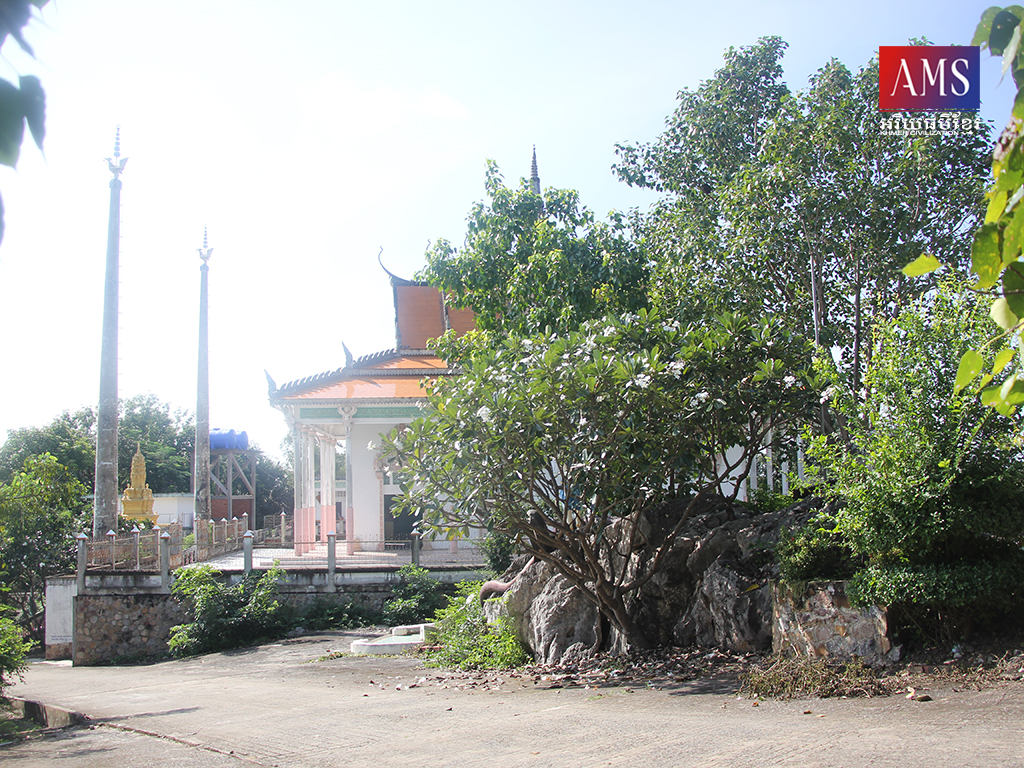
រូបលេខ១ 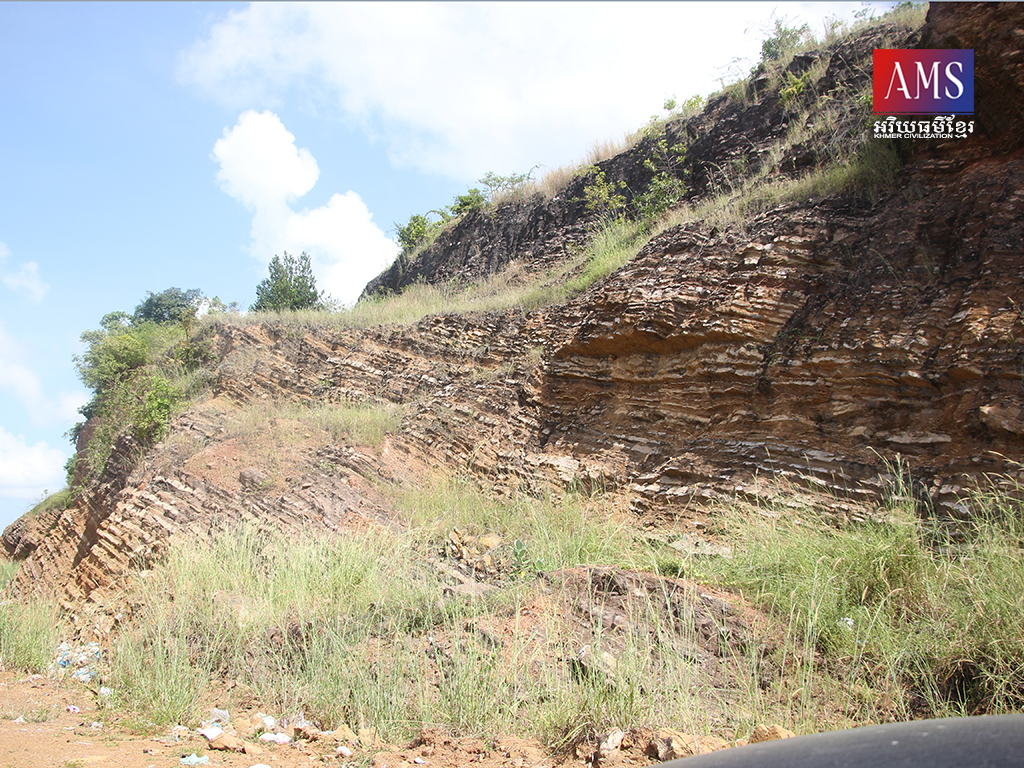
រូបលេខ២ 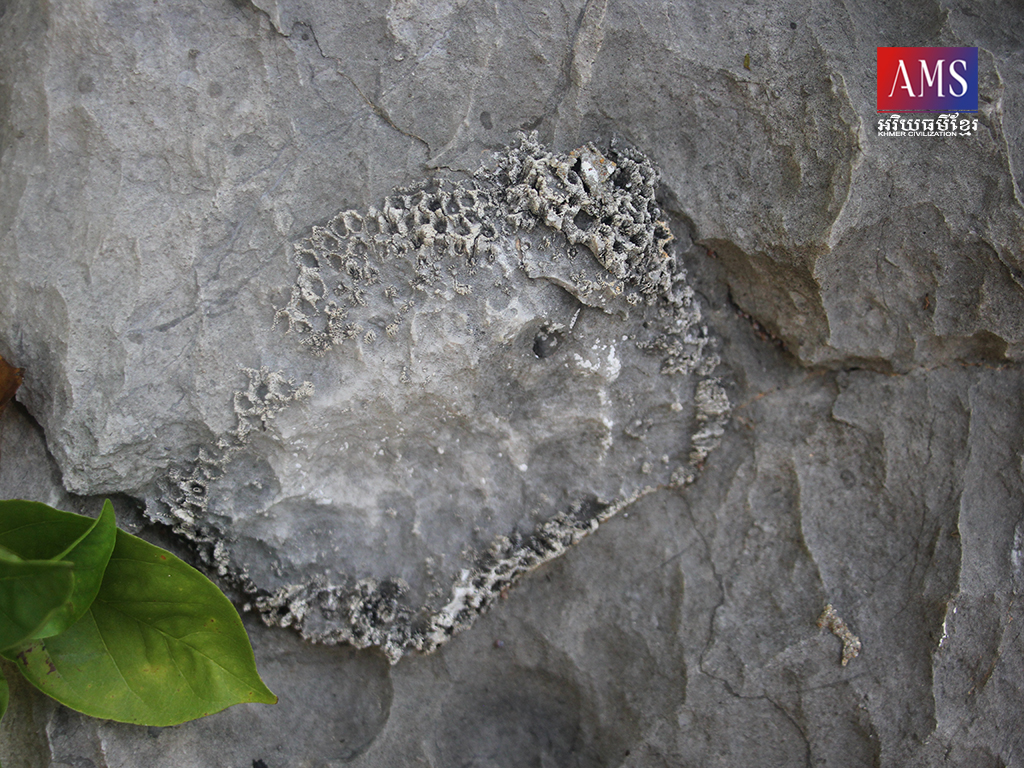
រូបលេខ៣ 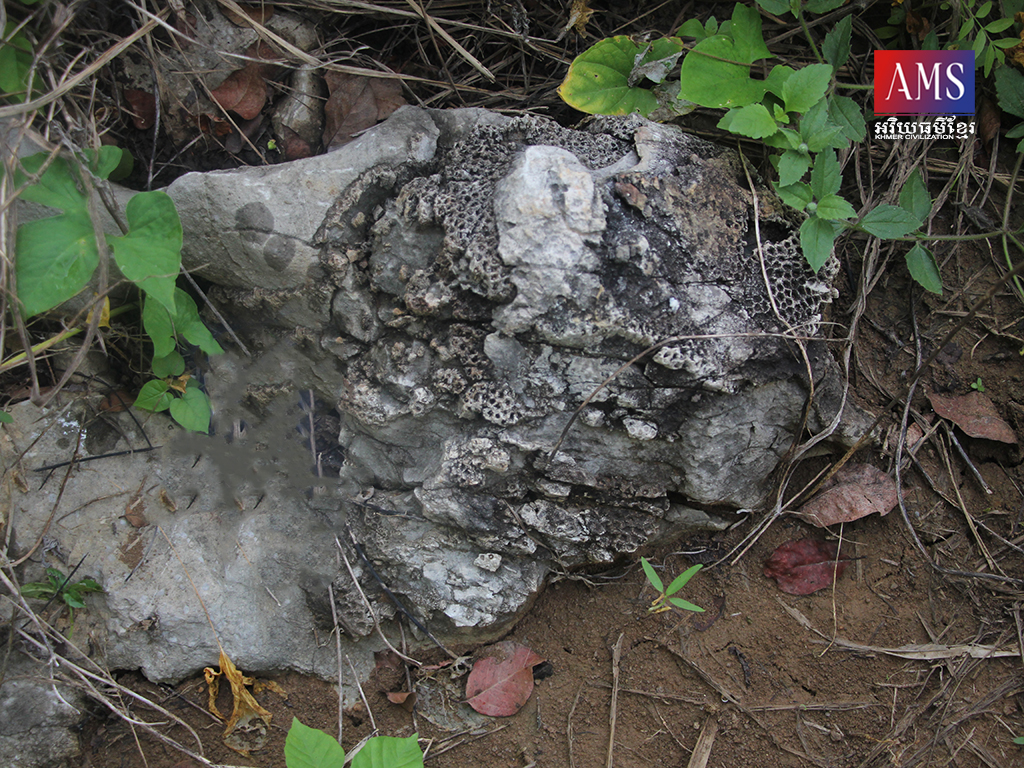
រូបលេខ៤ 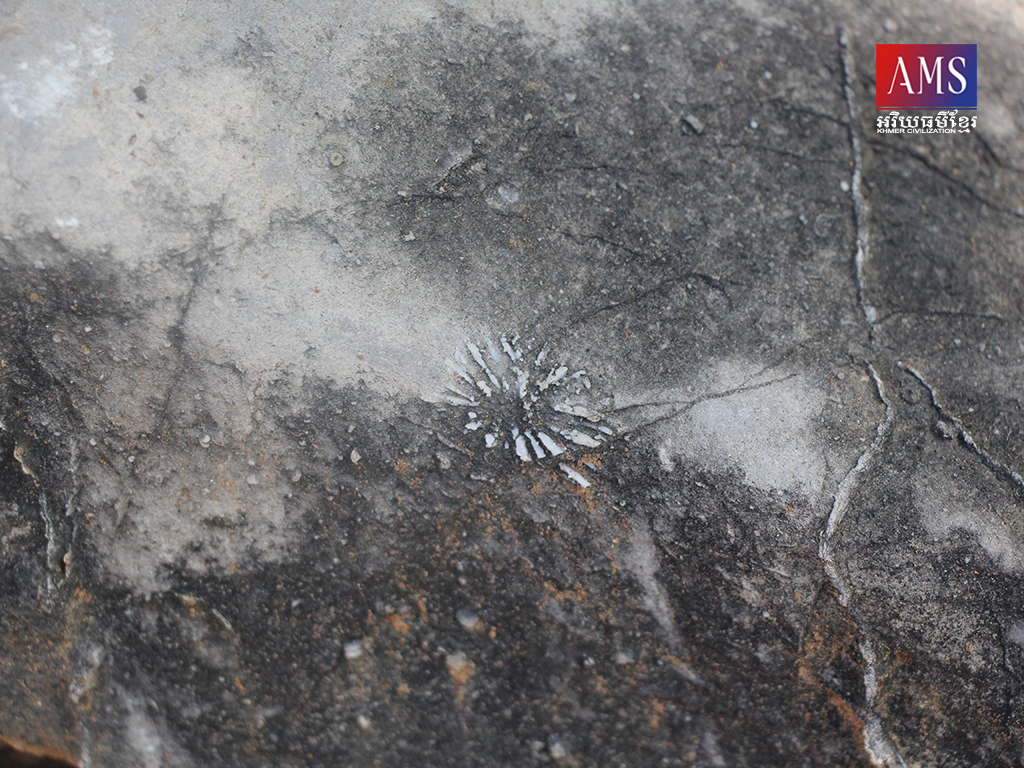
រូបលេខ៥ 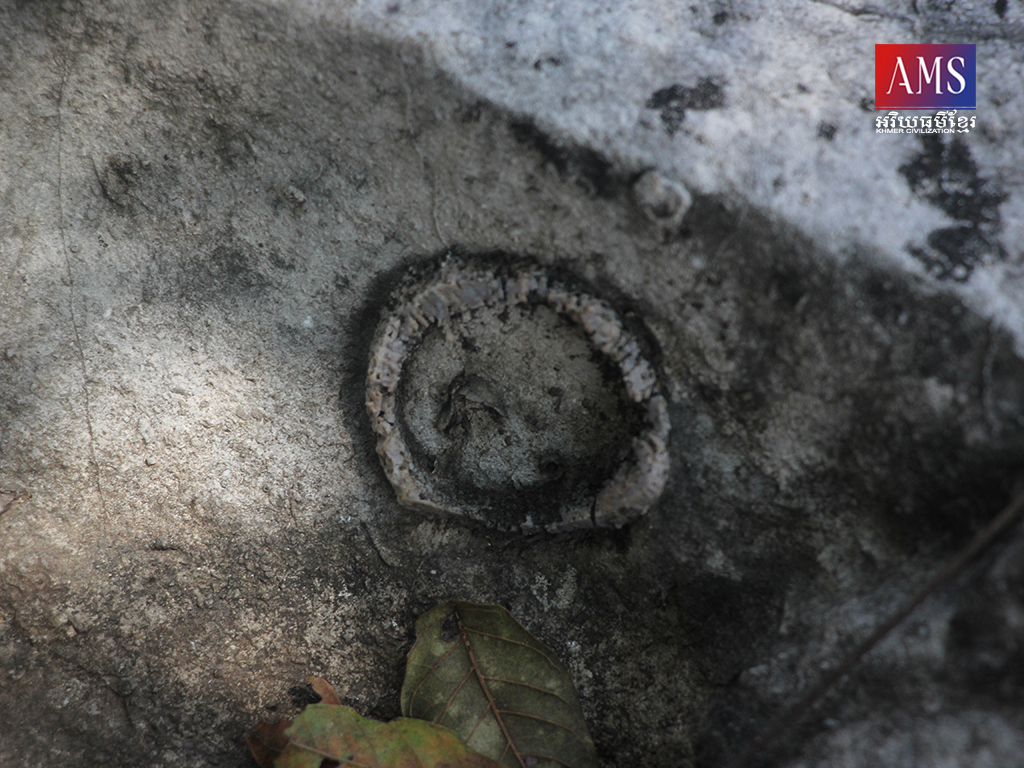
រូបលេខ៦ 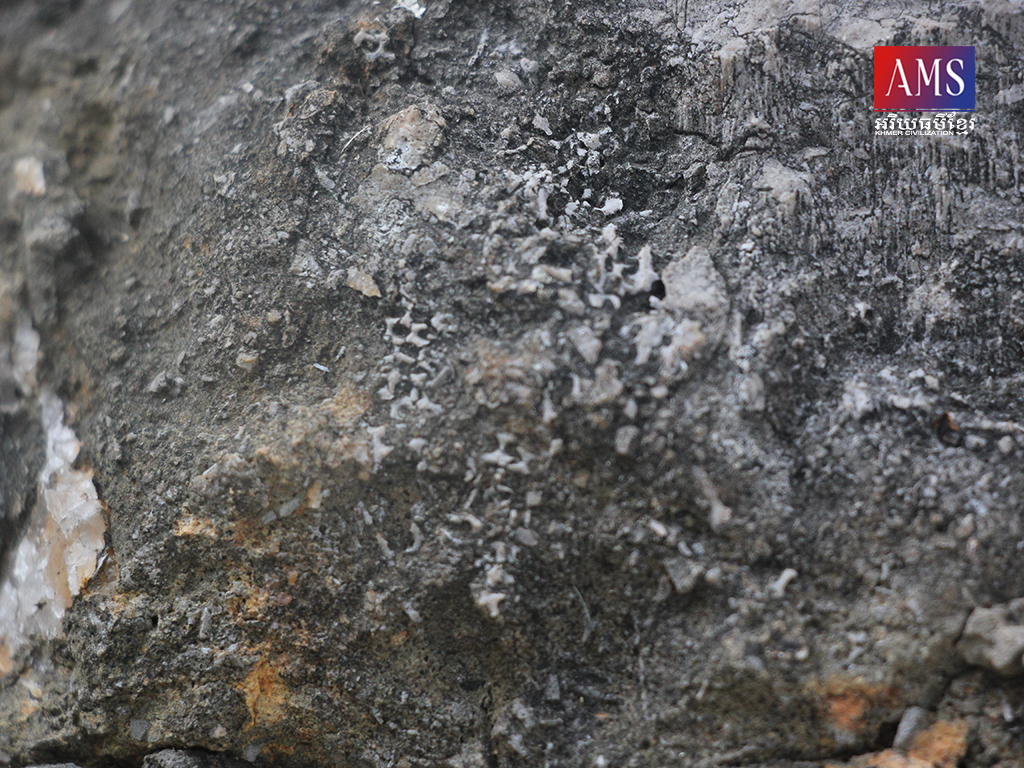
រូបលេខ៧ 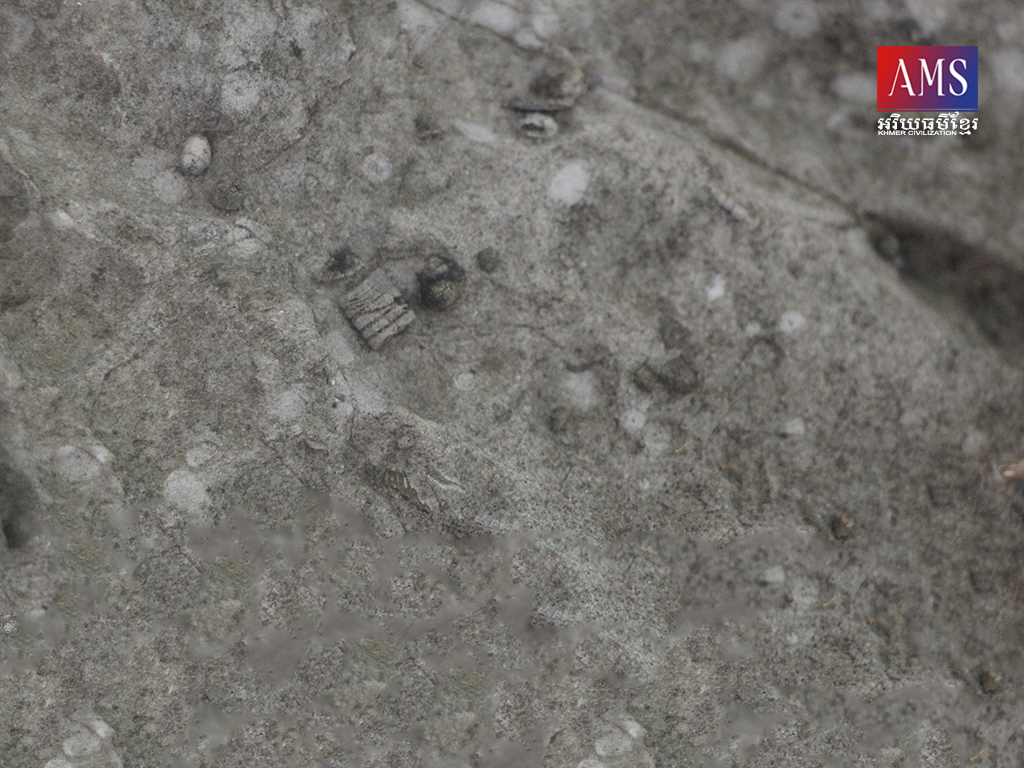
រូបលេខ៨ 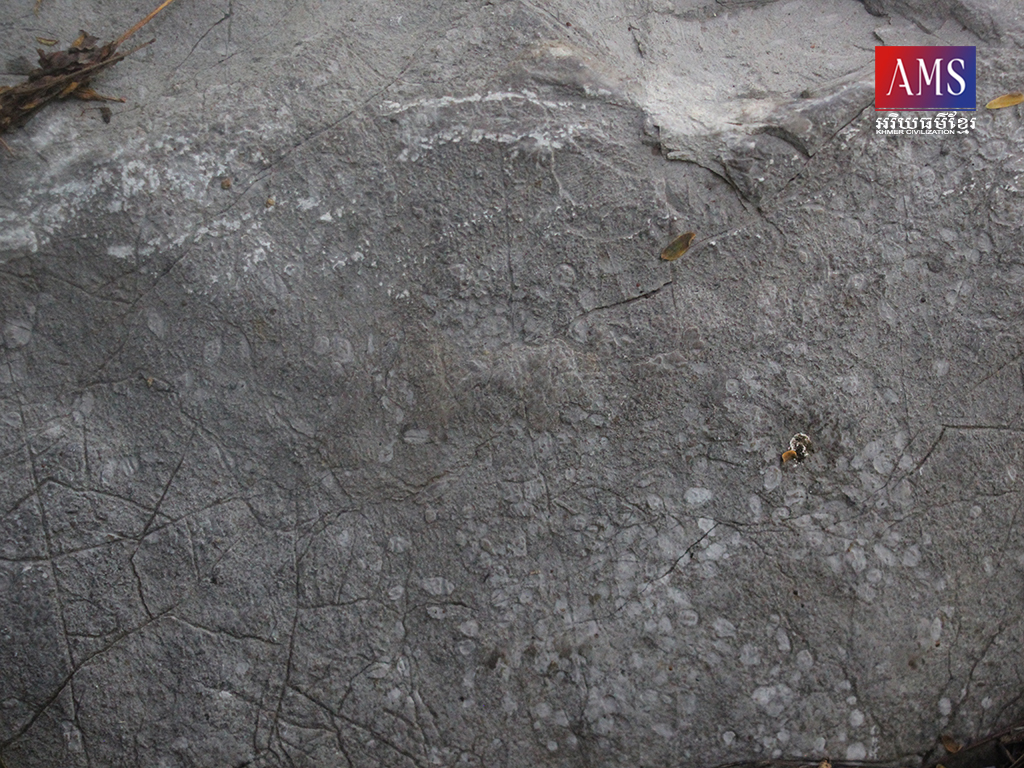
រូបលេខ៩ 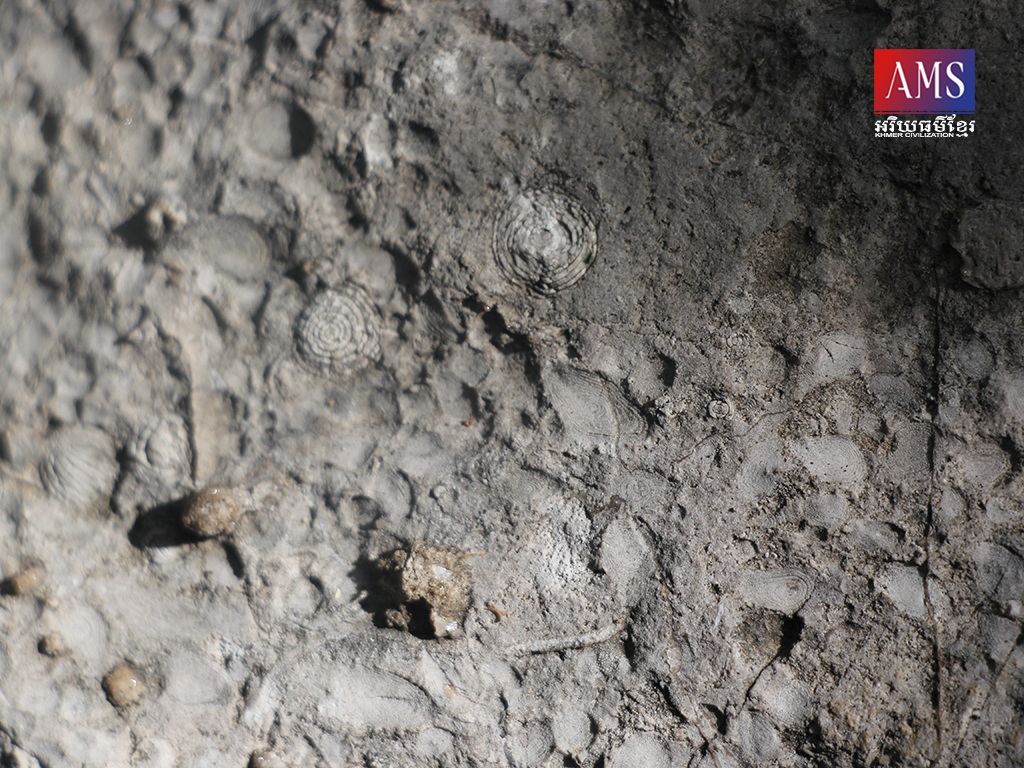
រូបលេខ១០ 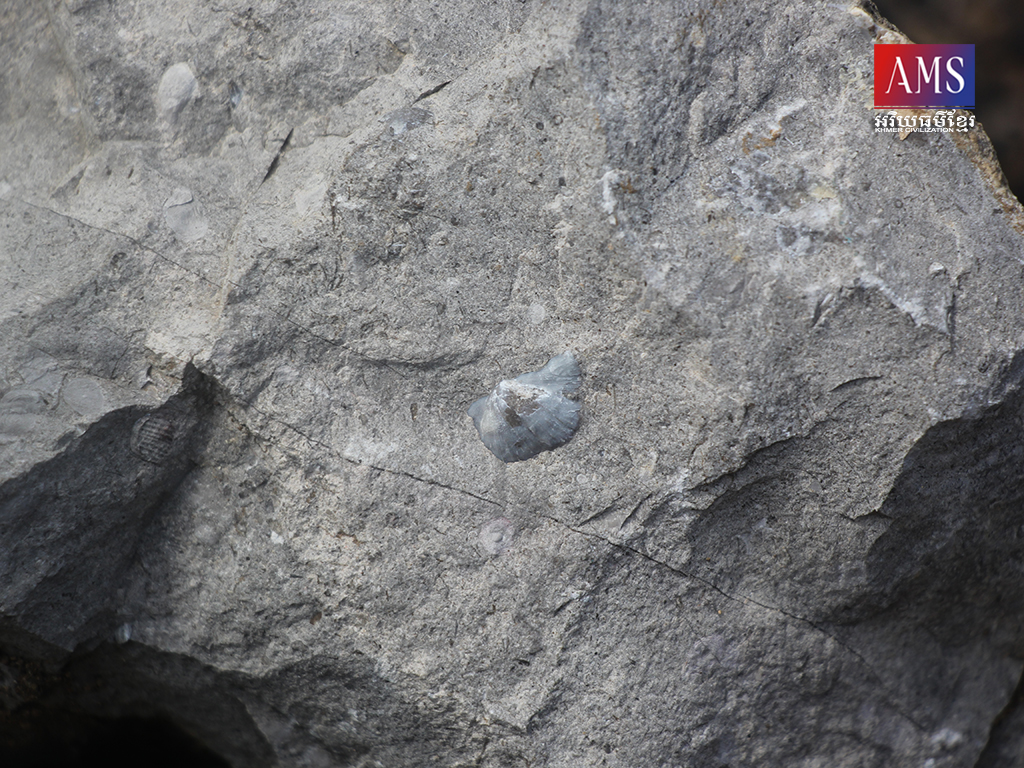
រូបលេខ១១ 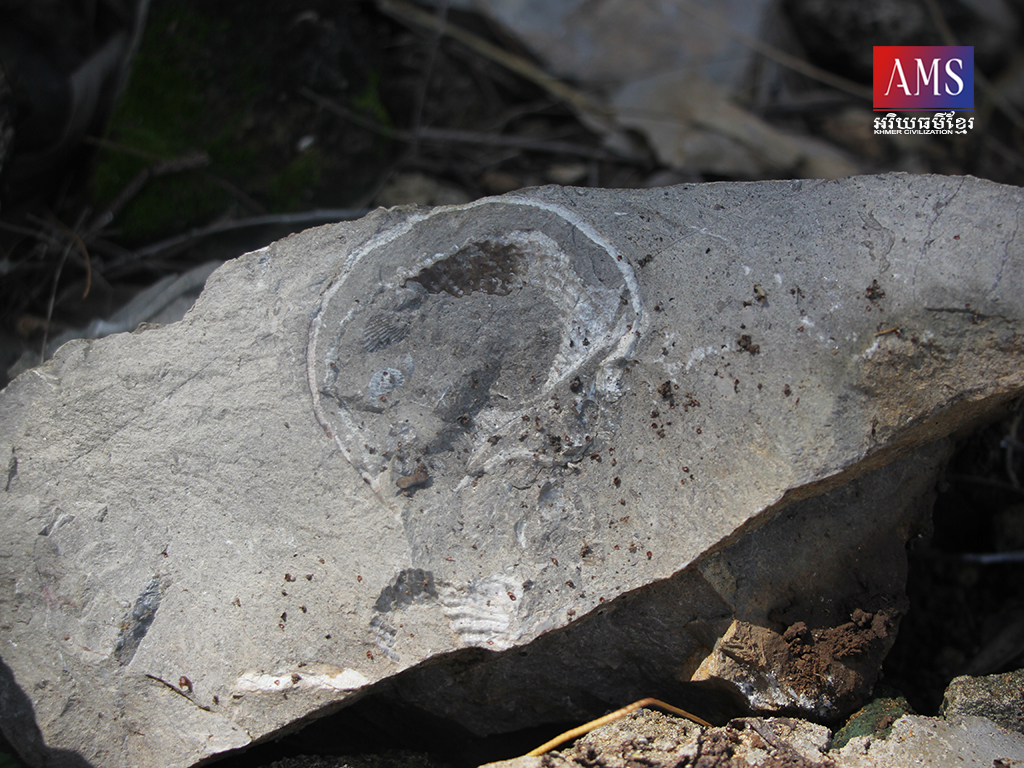
រូបលេខ១២ 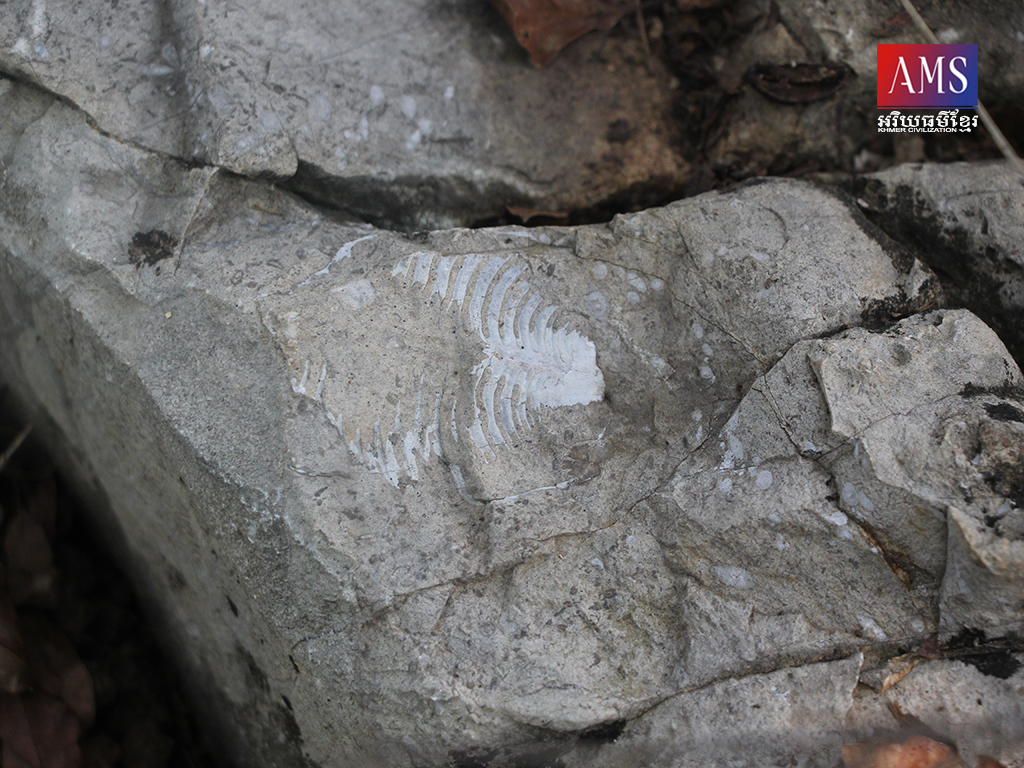
រូបលេខ១៣ 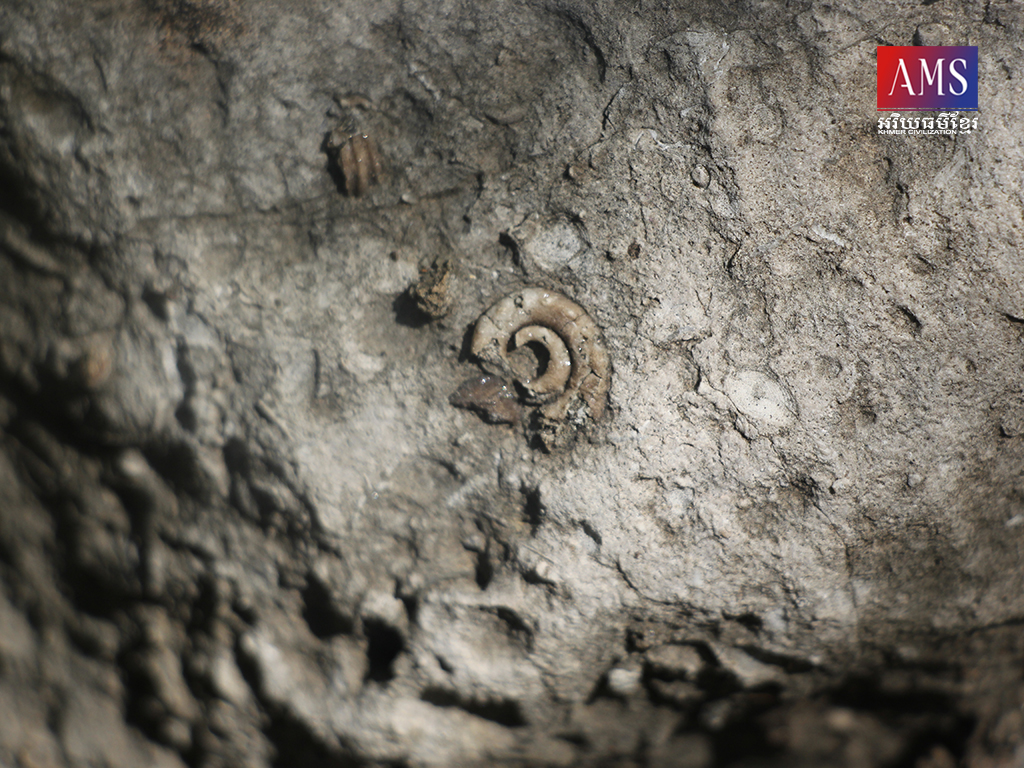
រូបលេខ១៤ 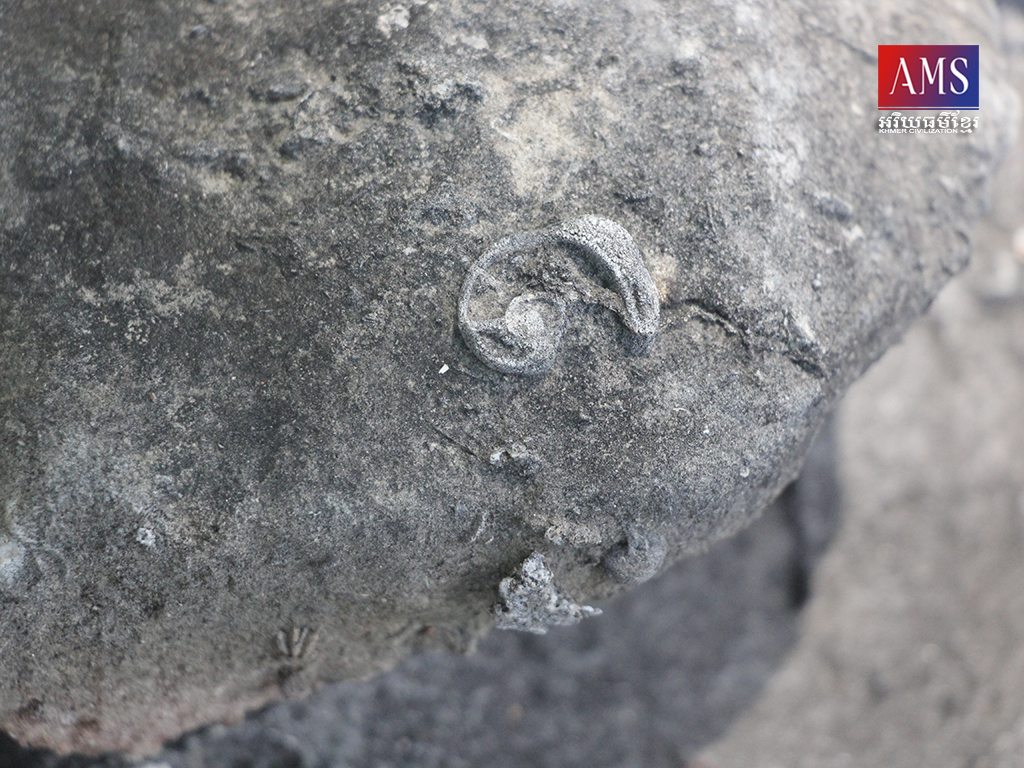
រូបលេខ១៥
———————————————————————-
Marine Fossil Site at Phnom Touch
Phnom Touch is an ancient marine fossil site located in Mongkul Borei district, Banteay Meanchey province. We can travel from Battambang to Banteay Meanchey on National Road 5, about 1 km from the border of Battambang.
Based on a preliminary inspection and study by the Fossil Study Team of the Department of Heritage Zone, Ministry of Environment in November 2021, Phnom Touch was found to be a limestone mountain that determined the first era of a Paleozoic in a period of the Permian (251-299 million years).
In addition, we inspected some locations at the entrance of Wat Phnom Touch and up to the top of the mountain. On the eastern side of the mountain, we found many limestones and fossils of marine animals such as corals and small sea creatures. On the west side of the mountain, on the other hand, is a former quarry where the quarry is below the limestone layer and no fossils have been found. The limestone at Phnom Touch is a type of rock formed by the accumulation of some biodiversity, formed from the accumulation of shells, corals, algae, and other organic debris. In addition, it can also be formed by the process of chemical precipitation, such as the precipitation of calcium carbonate from lakes or seawater. These rocks grow in seawater stability, shallow, clear waters, and coral reefs.
Due to the lime deposits forming the lime element of the marine species at Phnom Touch, there is some fossil evidence that has been left, and which thinks that the location of this Phnom Touch used to be the sea. A large number of coral fossils have been found in the limestone layers that we see from the flank of a mountain continue up to the top and they may be in the Family Rhizangiidae, Class Scleractinia, and Filum Cnidaria. Many are also found in Phnom Neang, Phnom Bak, Phnom Kang Va, and another type of coral is similar to the coral in the Rugosa Coral. Besides, the fossils of the Sponges belong to the Phylum Porifera, which these species have survived to the present and have not yet been identified. Other fossils are in Bryozoa species within net-shaped, which belong to the Bryozoa phylum, dating from 480 million years and still survive until now. These species are also found at some fossil sites in Banteay Meanchey province, such as Phnom Bak and Phnom Preah Phnom Veng.
In addition, we also found fossils of Crinoid species in the phylum Echinodermata and Class Crinoidea. According to documents, there are more than 6,000 species of Crinoid species and more than 600 species still live today. These Crinoid species also found and continue to live in Cambodia today. They are very similar to starfish. On the other hand, these species are rarely found in this small mountain area. One type of fossil resembles a grain of rice called Fusulinina, some of which are became rock. Brachiopods, on the other hand, date to the first era, where they are found mostly in fossil sites in Banteay Meanchey province, and found in four species, especially in the flank of a mountain and further to the top of the mountain. The latest fossils found are shells, which we have encountered in some fossil sites, such as Phnom Kangva, Phnom Bak, and Phnom Doung Preah.
In conclusion, we can assume that Phnom Touch is a site of marine fossils dating to the first era of Paleozoic in the Permian period (251-299 million years). The points shown above are part of the initial information found in fossil research in Cambodia. Furthermore, this Phnom Touch fossil site is similar to the fossil sites of Phnom Neang, Phnom Bak, and Phnom Preah Phnom Veng.
អត្ថបទដើម៖ លោក លឹម វណ្ណច័ន្ទ






